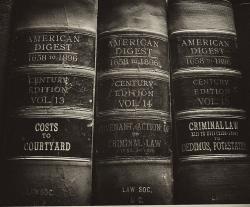Event Logistics
Statutes, civil codes, court cases, treaties, and other legal publications contain a wealth of raw material for historical and economic research. Those studying human rights violations in Korea during the Japanese occupation, or changing attitudes toward water policy in the 20th-century western U.S., are actively mining these materials for evidence. Unfortunately, print copies of these publications are now disappearing rapidly from law and academic libraries. This CRL webinar, especially useful for those who serve researchers, surveys the landscape of uses and providers. Topics to be covered:
- Digitized legacy materials in subscription databases, such as HeinOnline, LLMC-Digital, Gale’s Making of Modern Law, and others: gaps, overlap, strengths, weaknesses
- GPO’s FDsys repository of government documents and other open government resources: scope, strengths, and weaknesses
- Prospects for U.S. scholarly access to primary international law sources: the status and likely future of LC’s Global Legal Information Network (GLIN)
There will also be an update on the joint CRL and Law Library Microform Consortium effort to archive primary legal materials in print.
Related ReSOURCES
Assessments from CRL of primary source legal databases:
- Legal databases: comparative analysis (topic guide)
- Review of LLMC-Digital
- Review of HeinOnline
CRL webinar on the LLMC-Digital database and other benefits of the CRL partnership with LLMC (September 22, 2010)




